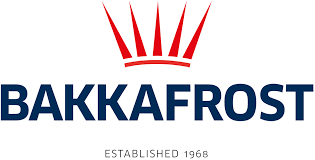1/ Picture a company that achieved 21% sales CAGR over the past decade, all internally funded, with consistent 70% gross margins, 40% EBITDA margins, 25%+ ROEs and 15%+ ROAs. Must be a tech co, right? Wrong. Enter Bakkafrost, a salmon farming company. Salmon farming? How? Read on
2/ Bakkafrost has a strong market position, aligned owner-operator w/a track record of formidable execution, good growth runway, and remains under-followed. It is also small ($4.3Bn cap) but float is only 65.5% as 15.5% is owned by insiders and 9.5% by the Norwegian Pension Fund
3/ Bakkafrost, founded by the Jacobsen brothers in 1968 and listed on the Oslo exchange since 2010, is the largest salmon producer in the Faroe Islands, a self-governing archipelago part of the Kingdom of Denmark. It is also the third largest fish farming company in the world.
4/ The company grew organically in its early years, acquiring farming licenses in key Faroese fjords and building related slaughtering, processing and packaging facilities on the islands. It started by selling whole-gutted salmon but later introduced “valued-added products” (VAP)
5/ “Valued-added products” (VAP) includes the processing of salmon into branded boneless, skinless portions ready for consumption. It also has a smaller segment (fishmeal, oil and feed - “FOF”) that sells fish feed, fish oil, and fishmeal.
6/ Today, Bakkafrost is a vertically integrated salmon producing company, controlling the entire chain from fish feed and broodstock all the way to harvesting, processing and packaging. This allows it to guarantee consistently high product quality and command premium prices
7/ Bakkafrost is entrenched in the Faroe Islands, which enjoy a strong a regulatory framework. The company maintains exclusive non-overlapping licenses that operate on a 12-year rolling lifespan with automatic renewal and subject only to regulatory compliance
8/ Salmon farming supply is constrained by natural condition requirements (optimal water temp and natural currents) in which salmon can grow. Most of the harvest comes from places like Iceland, Chile, Norway, New Zealand and Scotland, where the favorable conditions are found
9/ Salmon prices vary by weight with heavier salmon commanding a premium over small. The gutted weight of the avg Bakkafrost salmon (due to operational excellence, superior locations in the Faroese fjords, etc) is 5.5+ KG, giving the company best-in-industry EBIT/KG margins
10/ Bakkafrost today is still very much a family business. The family holdings are split between Oddvør Jacobsen (7.77%) and Regin Jacobsen (7.81%) who together own 15.5% of the company. Regin is the CEO of the company and son of one of the sibling founders. Oddvør is his mother!
11/ New shares were issued as part of the Scottish Salmon Co. acquisition in 2019 and Jacobsen (CEO) subscribed to $5.4m of new shares despite his already significant ownership in the company, a sign of confidence in the transaction. The value of his stock today is $315M.
12/ Aside from two acquisitions (in 2010 and 2019), all growth has been internally-funded by aggressive capital expenditures to expand the growing, processing and thereby volume throughput of salmon. Expansion capex is routinely 2-3x annual D&A which has kept FCF optically low
13/ This growth capital spend has been shrewdly allocated and highly productive. Returns on incremental equity and capital have mirrored historical returns. Importantly, capex is projected to remain high over the next 3 years, allowing continued value accretive growth
14/ The Scottish Salmon Co. was acquired for 7.2x EBITDA in 2019. It operates at a much lower margin profile than Bakkafrost. Mgmt is betting it can increase profitability by applying its operational best practices to the co. The verdict is still out, but my bet is they get there

 Read on Twitter
Read on Twitter













